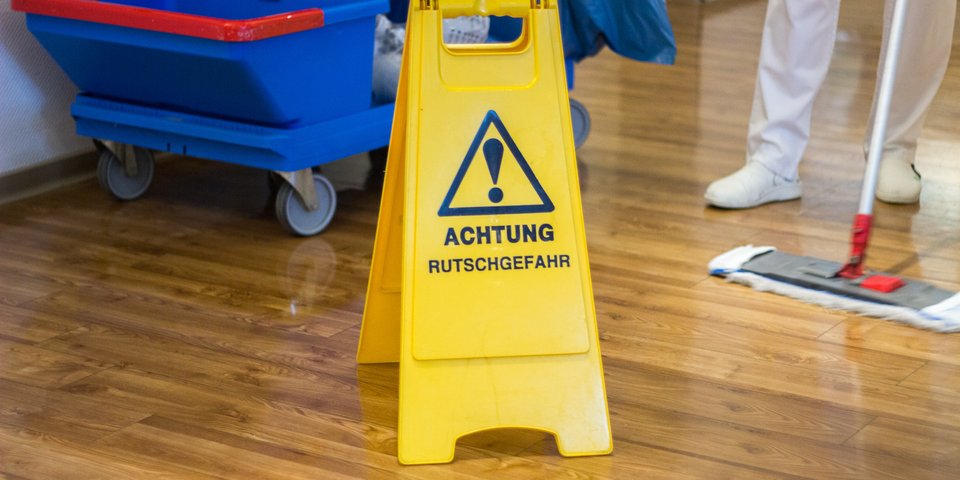 Sir_Oliver - Fotolia
Sir_Oliver - FotoliaA world without accidents at work – still much to be done
Eurostat publishes figures on accidents at work in Europe.
FL/SW – 10/2018
The European Union Statistical Office (Eurostat) recently published figures on non-fatal and fatal accidents at work in the 2014-2015 monitoring period as part of the European statistics on accidents at work (ESAW).
An accident at work is defined as an occurrence during the course of the work that leads to physical or psychological harm. Fatal accidents at work are those that lead to the death of the victim within one year of the accident.
Number of accidents at work
Non-fatal work accidents are defined as those involving at least four days absence from work. These are often associated with significant harm to the affected workers and their families, and may result in a person living with a permanent disability.
According to Eurostat, there were more than 3.2 million non-fatal and 3,876 fatal accidents at work in the EU in 2015. The total number of non-fatal accidents at work decreased slightly by 0.3% between 2014 and 2015. In contrast, there were about one hundred additional fatal accidents at work than in the previous year.
Men are more likely to suffer an accident at work than women. More than two thirds of non-fatal accidents at work in 2015 involved men. The difference was even greater in relation to fatal accidents at work, with 19 out of 20 fatalities involving men.
One reason for this, according to Eurostat, could be the different types of work that women and men do. For example, there are significantly more accidents in the mining, manufacturing or construction sectors, which are dominated by men. In addition, women are more likely to work on a part-time basis, so the shorter period of time spent at the workplace reduces the probability of an accident.
Incidence rates
Another way of presenting statistics on work accident is to use incidence rates, that is, the number of accidents at work in relation to the number of employees. On average, there were 1.83 fatal accidents at work per 100,000 workers in the EU. The number of fatal accidents within Europe varies greatly. The incidence rate in Germany, the United Kingdom, Sweden and the Netherlands in 2015 was less than one. In Portugal, Bulgaria and Lithuania, there were more than 3.50 fatal accidents per 100,000 employees. The highest incidence rate among EU Member States was recorded in Romania, at 5.56 per 100,000 employees.
The number of non-fatal accidents at work was also analysed using incidence rates. Across the EU Member States, there were, on average, 1,513 of these accidents per 100,000 employees in 2015. Romania and Bulgaria had the lowest incidence rates, while France had the highest rate at 3,160. One reason for this could be a lack of reporting such accidents at work, especially if there is no financial incentive for the victims to file a report.
Standardised incidence rates
When comparing data between countries, it can be difficult to interpret simple incidence rates because the nature of the activities differs depending on the structure of each economy, which in turn affects the likelihood of an accident.
Thus, the number of accidents at work differs greatly from sector to sector. More than two-thirds of all fatal accidents at work occurred in the construction, manufacturing, transport and storage sectors, as well as agriculture, forestry and fishing sectors. By contrast, fatal accidents in the service sector are comparatively rare, whereas non-fatal accident are relatively common in wholesale and retail trade, healthcare and social work.
To account for this, standardised incidence rates were calculated. These assume that the relative size of economic activities within each economy are the same across the whole EU-28. As such, these standardised incidence rates provide a more neutral comparison of the health and safety situation in different countries.
On this basis, the EU-28 averaged 2.38 fatal accidents and 1,642 non-fatal accidents per 100,000 employees in 2015. The highest standardised incidence of fatal accidents at work was recorded in Romania with 7.49 deaths per 100,000 employees. Portugal, Luxembourg, Bulgaria, Lithuania, Austria and Latvia followed with standardised rates in the range of 4.1-4.7 fatal accidents per 100,000 employees. At the other end of the scale, the Netherlands had the lowest standardised incidence rate among Member States with 0.76 fatal accidents per 100 000 employees.
Work accident statistics in Germany
The German Social Accident Insurance (DGUV) also publishes statistics on accidents at work in the private and public sectors twice a year. In the first half of 2018, 441,295 accidents at work resulted in more than three days’ absence from work or death. This was an increase of 1.9% over the previous year. 206 accidents were fatal, which was 7.6% less than last year.
With Vision Zero, the DGUV pursues the goal of a world without occupational accidents and work-related illnesses. Its highest priority is the prevention of fatal and serious work accidents and occupational diseases. The goal of zero accidents uses a comprehensive approach in which targets are set and agreed upon; the focus is on hazards; and which takes into consideration all circumstances that cause accidents at work and on the road, occupational diseases and work-related health hazards.
Further information is available regarding the Eurostat analysis and the DGUV statistics (German only).
